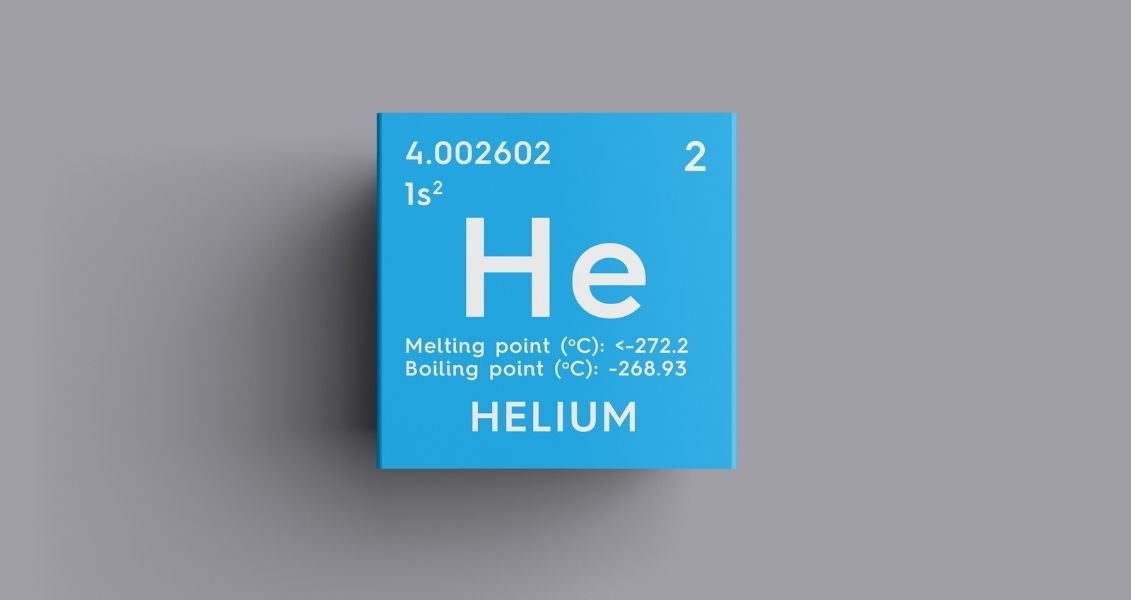Helium Discovery Day
What is this event?
Helium filled balloons that can fly, and it also has a strange effect on the human voice. These facts limit the knowledge of helium for the vast majority of people, and meanwhile, it is a very interesting chemical element that has a much more important meaning. It ranks second after hydrogen in distribution in the universe — 24% of the cosmic mass consists of helium. Helium was discovered in the middle of the 19th century, and since then it has been used in industry, aviation, electronics, medicine and other areas of human activity. To emphasize the importance of this chemical element in our lives, there is an annual holiday – Helium Discovery Daywhich is celebrated on August 18.
How did the idea of celebrating Helium Discovery Day come about?
The 19th century was a turning point for observers of celestial bodies – astronomers. They got a new instrument called a spectroscope, which worked like a powerful prism, scattering light into waves whose lengths could be measured. The first spectroscope model was created by the German physicist and inventor Joseph Fraunhofer. At the same time, he discovered incomprehensible dark lines that interrupted other colors of the spectrum.
Mysterious lines
Only a few decades later, the secret of dark lines was revealed by other researchers, Gustav Kirchhoff and Robert Bunsen. They discovered that the dark Fraunhofer lines represent the phenomenon of the absorption of part of the light by vapors of various gases that make up the outer shell of the Sun. Thus, each chemical element has its own unique spectrum, like a human fingerprint. Thanks to this conclusion, by analyzing the radiation spectra of individual elements in the laboratory, and then pointing their spectroscopes at the stars, scientists were able to determine their chemical composition.
The French astronomer Pierre Jules Jeansen was fascinated by this new form of light analysis. He traveled throughout Europe and Asia in search of the best places to observe the night sky. In addition, Jeansen studied eclipses, so in February 1867 he visited Italy, and then went to India, to the city of Guntur, where it was possible to observe a total solar eclipse that was supposed to occur on August 18, 1868.
So on the day of the eclipse, armed with a spectroscope, Jansen saw something unusual — a bright yellow line whose wavelength did not correspond to any known element. The spectrum was close to sodium, but the researcher realized that it was a new element, still unknown on Earth. He reported the news to the French Academy of Sciences, but around the same time the Academy received a similar message from the British astronomer Joseph Norman Lockyer.
Since the work of both researchers took place in parallel, they were offered a compromise – to divide the authorship of the discovery into two. Jeansen and Lockyer agreed, and later even became close friends. Since the mysterious yellow light with a wavelength of 587.49 nanometers was emitted by an element discovered on the Sun, it was decided to call it helium – in honor of the Greek god of the Sun – Helios.
Helium and the scientific community
The attitude of the scientific community to this discovery was ambiguous – many scientists expressed skepticism about the existence of an element in space that does not exist on our planet. However, in 1882, helium was also discovered on Earth – the Italian physicist Luigi Palmieri recorded a yellow spectral line while studying the gas released from the lava of Vesuvius. After 1895, when the British chemist William Ramsay conducted an experiment with a uranium-bearing mineral and obtained a gas containing helium, all doubts disappeared – the element was finally identified. In 1903, William Ramsay and the chemist Frederick Soddy established the nature of the origin of helium as a product of radioactive decay, and since 1905 it became known that helium in different concentrations can be contained in natural gas.
Since then, scientists have studied helium in detail and included it in a group of six chemical elements called “noble gases”. In addition to helium, this group consists of neon, argon, krypton, xenon and radon. They are characterized by similar properties, in particular, inertness, that is, a low probability of participation in chemical reactions. This happens because the outer shell of their atoms is completely filled with electrons. Helium is the second least reactive element after neon.
Helium is an assistant
The highest concentration of helium is in stars, where it is formed from hydrogen by nuclear fusion. In the Earth’s atmosphere, helium is present within 5 parts per million, that is, 0.0005%. This element cannot accumulate in the Earth’s atmosphere in significant quantities, because the gravity of our planet is not enough to hold it, and helium quickly leaves the Earth, flying away into space. Varying amounts of helium are found in radioactive minerals, meteoric iron, and natural gas.
At first, no one thought that helium would have any practical application, but during the First World War it was used for airships, because this gas is seven times lighter than air, does not burn and does not enter into chemical reactions with other substances, so it is ideal for similar aircraft.
Helium also proved to be useful in the first flights to the moon — it was added to the oxygen and fuel tanks for the Saturn 5 launch vehicles that carried the Apollo astronauts into space, as well as for the Lunar Module, from which people landed on the surface of the satellite Earth In the modern world, helium is an indispensable component of many high technologies and an important technical gas, and the level of its use is one of the indicators of the technological development of any state.
The day of the discovery of helium in history
-
1814German inventor Joseph Fraunhofer created the first spectroscope.
-
1868Pierre Jules Jeansen and Joseph Norman Lockyer independently discovered a new element during a spectral study of the Sun.
-
1882Physicist Luigi Palmieri discovered the content of helium in the volcanic gas of Vesuvius.
-
1895Chemist William Ramsay experimentally confirmed the existence of helium gas on Earth.
-
1903It was established that helium is formed as a result of radioactive decay.
-
1905Helium content in natural gas was discovered. Since then, this element for use in industry and other fields has been extracted from natural gas.
Frequent Questions and answers on the day of the discovery of helium
Since helium is much lighter than air, human vocal chords in its environment increase the frequency of oscillations and the tone of the voice becomes much higher than usual. However, inhaling large amounts of helium is dangerous — although the gas is non-toxic, it displaces oxygen, which can cause breathing problems and dizziness.
Theoretically, this is possible, but the lifting force of helium is about 1 gram per 1 liter of gas. Accordingly, a balloon with 10 liters of helium can lift a weight of 10 grams. Therefore, a person weighing 50 kilograms will need 5,000 such balls to lift off the ground with their help.
Helium is a non-renewable natural resource that is usually extracted from natural gas. Gas mined in several regions of the USA (Texas, Oklahoma and Kansas) contains the most helium — from 0.3 to 2.7%. The United States accounts for 30% of the world’s helium production. Other helium producers are Russia, Qatar, Canada and Algeria.
In order to convert helium into a liquid or solid state, it is necessary to apply ultra-low temperatures and ultra-high pressure. The boiling point of helium is -268°С. It does not harden under normal pressure at any low temperature, this is possible only if the atmospheric pressure is increased to 25 atmospheres and the temperature is 272°С.
Helium accumulation is a very slow process. For example, in one ton of granite containing 2 grams of uranium and 10 grams of thorium, only 0.5 cm3 helium, a million years must pass. Therefore, the older the gas-bearing rocks are and the higher their content of radioactive elements, the more helium is in the composition of such natural gas.
How to celebrate Helium Discovery Day?
Scientists predict a shortage of helium in the near future, given the very slow process of its formation, the difficulty of extraction and the low content in natural gas. So it is possible that the use of helium balloons at entertainment and festive events will one day be restricted or banned.
However, by far the easiest way to mark Helium Discovery Day — try to inhale some of this gas from a balloon and be surprised how your voice will change after that. It is especially fun to do it in the company of friends and children, but you should remember the safety rules and not inhale helium for too long.
If changing your voice is not part of your plans this day, you can simply organize your friends and go for a walk together with bright balloons filled with helium. Interested passers-by should be informed about the reason for such a festive “parade”, because not everyone knows about Helium Discovery Day. Therefore, it will be appropriate to share this information on social networks, adding photos from the holiday walk.
To end the day on the most romantic note, you should tie notes with wishes or cherished dreams to each ball and let them fly freely. And for the fact that we are able to do this, we can express our gratitude in one of the notes to Pierre Jeansen and Norman Lockyer – the people who once discovered helium for us.
Why is this day important?
Not everyone knows that helium is an important component in many areas of human activity, and not just a filler for balloons. Helium Discovery Day popularizes knowledge about this chemical element and honors the work of researchers who made mankind aware of the existence of this unusual gas.
For example, not everyone knows that helium is used in modern medicine — magnetic resonance imaging would be impossible without it, and helium-neon lasers are used in ophthalmic surgeries.
Rocket engines, balloons, surveillance devices, missile guidance systems also require the use of helium, so this element is necessary for the defense systems of various countries. In addition, helium is needed for advanced space research, so it is actively used by NASA and SpaceX.
Various industries use helium to test the tightness of their products — for example, it is important for manufacturers of aerosols, tires, refrigerators, fire extinguishers, air conditioners. In electric arc welding, helium is used as a protective inert gas. Helium is also used in the process of cooling nuclear reactors, and for divers and people working underwater, helium is an important component of the mixture for breathing, because, unlike nitrogen, this element is absolutely safe in combination with oxygen.
When will we celebrate the Day of discovery of helium?
| Year | Date | Weekday |
|---|---|---|
| 2021 | August 18 | Wednesday |
| 2022 | August 18 | Thursday |
| 2023 | August 18 | Friday |
| 2024 | August 18 | Sunday |
| 2025 | August 18 | Monday |




































